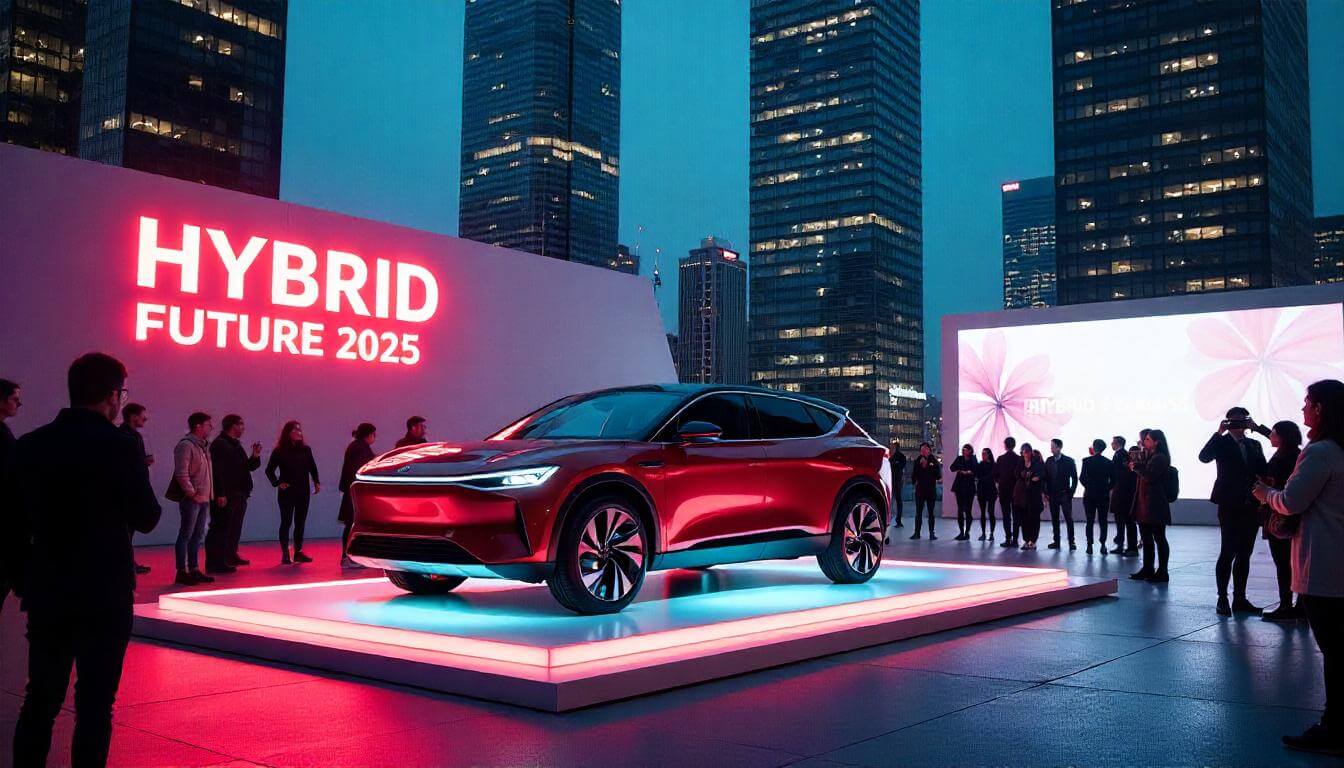Hybrid cars are becoming an increasingly prominent part of the automotive market. In 2025, the future of hybrid cars in Russia looks promising, despite difficult economic conditions and a lack of infrastructure. As of 2024, the share of new hybrids among new cars sold has risen to 4%, more than double the figures from the beginning of the year [web:14]. In this article, I will look at what factors are influencing the development of hybrids, which models are popular, and what is in store for this segment in the coming years.
Growing popularity of hybrids: statistics and trends
Hybrid cars in Russia are gradually gaining popularity. In 2018, only about 400 electrified cars, including hybrids and electric cars, were sold, but by 2024, the share of new hybrids has grown to 4% of total sales [web:1][web:14]. This is due to several factors. Firstly, rising fuel prices are forcing drivers to look for more fuel-efficient options. For example, the Toyota Prius consumes only 3.7 litres per 100 km, which is significantly lower than traditional cars [web:11]. Secondly, Chinese manufacturers such as Chery and Voyah are actively entering the market with affordable models [web:9].
Reasons for increased demand
The main driver of demand is fuel economy. Hybrids such as the Voyah Free offer a range of up to 1,221 kilometres in hybrid mode, making them convenient for long journeys [web:16]. Also increasing environmental consciousness among Russians is playing a role. In Europe, where 42.3% of cars sold in 2025 are hybrids, environmental standards are encouraging a shift to such cars [web:14]. However, in Russia this process is slower due to the lack of incentives. In addition, high taxes on hybrids, which take into account the power of the electric motor, restrain demand [web:13].
Popular models on the market
Chinese brands are leading among hybrids in Russia. Chery Tiggo 7 Pro PHEV and Tiggo 8 Pro PHEV became popular due to the combination of price and technology [web:9]. Also in demand is the Voyah Free, which in 2023 became the most purchased hybrid in the country [web:5]. Among Russian developments, the Evolute i-Space stands out, with production starting in 2024 at a plant near Lipetsk [web:19]. In addition, the Toyota Prius remains a classic of the genre, although its sales are limited due to its high cost and sanctions [web:9]. Thus, the hybrid market is becoming more diverse.
Infrastructure and government support
One of the main problems for hybrids in Russia remains the lack of infrastructure. Unlike electric cars, plug-in hybrids (PHEVs) can be charged from the grid, but there are not enough stations for this. In 2025, there are only about 5,000 charging stations in the country, which is not enough for a mass transition to electrified cars [previous market data]. Also, the lack of government support is hampering development. In Europe, for example, in Sweden, hybrid buyers receive subsidies of up to 40,000 kronor (about $4600), while in Russia there are no such benefits [web:1].
Problems with the charging infrastructure
The lack of a developed network of charging stations is a serious barrier. Plug-in hybrids, such as the Chery Tiggo 7 Pro PHEV, have an electric range of around 80-100 kilometres, but without stations, their use is limited [web:9]. In regions where distances between cities are large, this is particularly noticeable. For example, in Siberia and the Far East, drivers often travel hundreds of kilometres without being able to recharge [web:2]. As a result, many people choose hybrids that do not require external charging, such as the Toyota Prius with regenerative charging [web:14].
Opportunities for the state
Government support could make a difference. Introducing subsidies, as in China, where discounts for hybrids were offered in 2023, would increase demand [web:13]. Also reducing transport tax, as proposed in 2013, would make hybrids more affordable [web:24]. For example, reducing the tax rate based on electric motor capacity could reduce the cost of ownership by 20-30%. In addition, the development of charging station infrastructure in the regions would have accelerated the transition to hybrids. In summary, government measures could give a boost to the market.
The future of hybrid cars in Russia: the Chinese factor
Chinese carmakers are playing a key role in the development of the hybrid market in Russia. After the departure of Western brands such as Volvo and BMW in 2022, Chery, Voyah and Li Auto [web:9] took their place. In 2024, Chery introduced the Tiggo 7 Pro Plugin Hybrid with a combined output of 235bhp and acceleration to 100km/h in 7.5 seconds [web:8]. Premium models such as the Yangwang U8 with 1200 hp and the ability to float on water [web:16] are also gaining popularity. Thus, Chinese hybrids are becoming market leaders.
Advantages of Chinese models
Chinese hybrids are attracted by the combination of price and technology. For example, the 2024 Voyah Free has an updated design and a range of 1,221 kilometres, which makes it a competitor to European models [web:16]. Also, these cars are adapted to Russian conditions: they are equipped with powerful batteries resistant to low temperatures [web:8]. In addition, Chinese brands offer more options in the basic configuration than their Western counterparts. As a result, they become an affordable alternative for Russians.
Competition with domestic developments
Russian manufacturers are also trying to occupy a niche. The Evolute i-Space, launched in 2024, was the first mass-produced hybrid produced in Russia [web:19]. However, sales of domestic models such as the Moskvich 3e fell by 77% in the first quarter of 2025 due to competition from Chinese brands [previous market data]. In addition, high production costs make Russian hybrids less competitive. As a result, Chinese manufacturers dominate this segment for the time being.
Environmental aspects and technologies
Hybrids contribute to reducing emissions, which is important in the context of stricter environmental regulations. In Russia, where the car fleet is aging and the average age of cars is 15.5 years, switching to hybrids can improve the environmental situation [previous data]. For example, hybrids reduce CO2 emissions by 20-30% compared to conventional cars [web:13]. Also, technologies such as energy recovery increase efficiency: in models with energy recovery, brakes wear out more slowly [web:9].
Environmental benefits
Hybrids reduce the burden on the environment. In urban environments where traffic jams are commonplace, an electric motor can save fuel and reduce emissions. For example, consistent hybrids such as the Nissan Murano use the internal combustion engine only to recharge the battery, which reduces fuel consumption to 5 litres per 100 km [web:1]. At the same time, in regions with low environmental friendliness, such as the Magadan region, the introduction of hybrids could improve air quality [previous data]. Thus, hybrids are a step towards a cleaner future.
New technologies in hybrids
Hybrid vehicle technology continues to evolve. For example, in the future, PHEV models may get rid of wires thanks to induction charging, as already realised in some small production cars [web:21]. Also, systems such as Toyota Hybrid Synergy Drive allow flexible power distribution between the internal combustion engine and electric motor, improving efficiency [web:14]. In addition, the introduction of autopilots, as in Voyah Free 2024, makes hybrids more technologically advanced [web:16]. In summary, innovation increases the attractiveness of hybrids.
The Future of Hybrid Cars in Russia: Forecasts
The future of hybrid cars in Russia depends on several factors. On the one hand, rising fuel prices and interest in environmentally friendly technologies will stimulate demand. On the other hand, without government support and infrastructure development, progress will be slow. Experts predict that by 2030 the share of hybrids may reach 10% of total sales if subsidies are introduced and new charging stations are built [web:13]. In addition, competition with electric cars, which so far account for only 0.12% of the car fleet, will remain an important factor [previous data].
Prospects for growth
The market for hybrids will continue to grow in the coming years. Growing environmental consciousness and advances in technology such as wireless charging will make hybrids more attractive [web:21]. Also the increasing number of Chinese models such as Chery and Voyah will expand the choice for buyers [web:9]. However, without government measures such as tax cuts, there will not be a massive shift to hybrids. In summary, the future of hybrids in Russia looks optimistic, but requires support.
Challenges and barriers
The main challenges are high cost and lack of infrastructure. For example, replacing the battery in a hybrid is an expensive procedure, which makes buying older models unprofitable [web:9]. Also, the complexity of repairs and lack of specialised services discourage buyers [web:2]. In addition, climatic conditions in Russia, such as frost, reduce battery life [web:2]. As a result, the solution of these problems will determine the growth rate of the hybrid market.
Results: what's in store for hybrids in Russia
The future of hybrid cars in Russia is linked to the development of technology, growing demand and government action. Chinese brands such as Chery and Voyah are already leading the way, while domestic developments such as the Evolute i-Space are trying to compete [web:9][web:19]. However, without incentives and infrastructure, hybrids will remain a niche product. In 2025, the market is taking the first steps towards mass adoption, but a real breakthrough requires systemic change. Thus, hybrids have the potential to become an important part of Russia's car fleet.

 The future of hybrid cars in Russia">
The future of hybrid cars in Russia">
